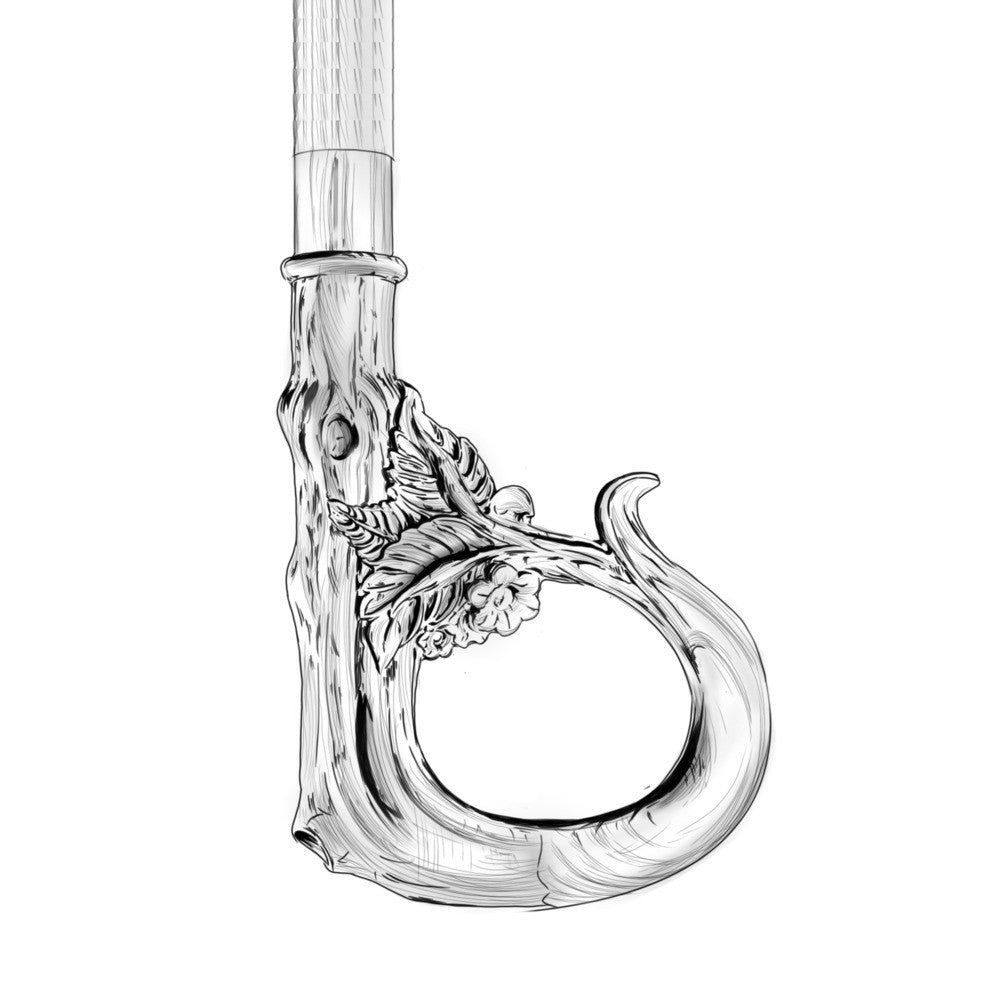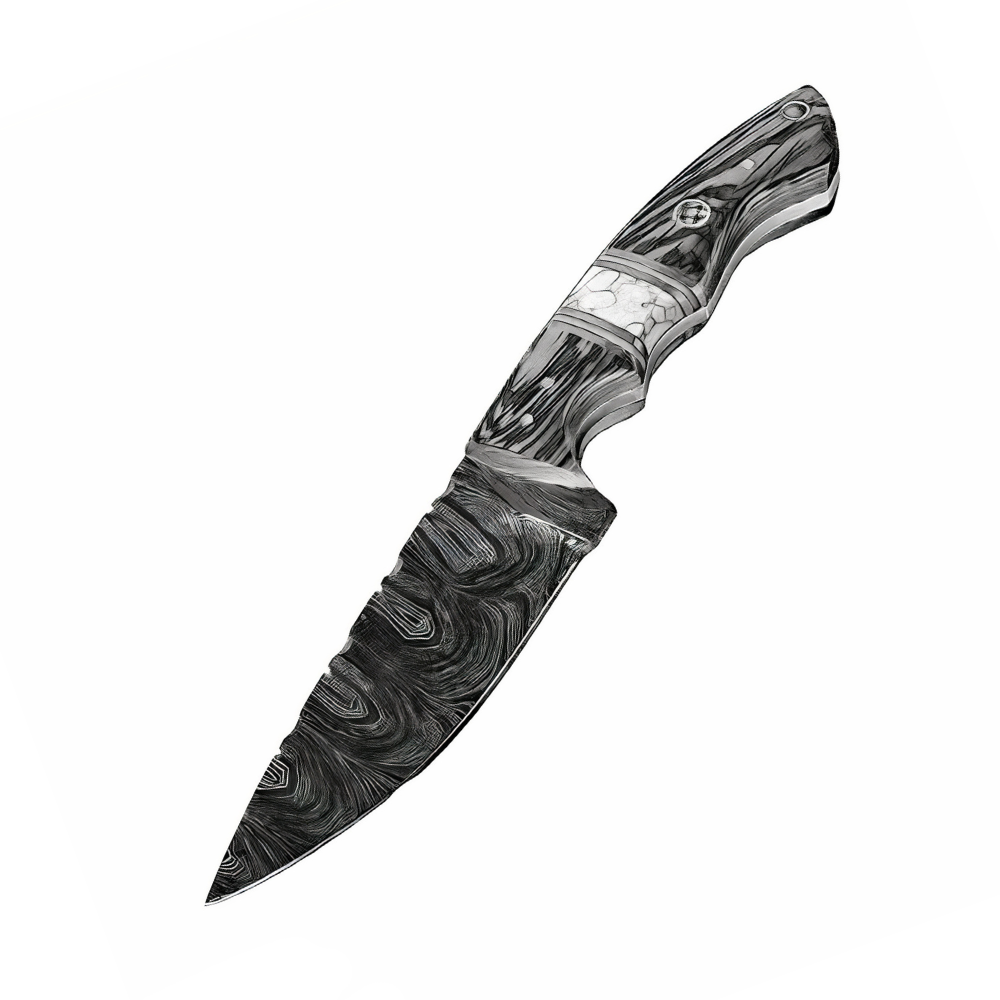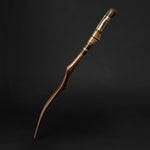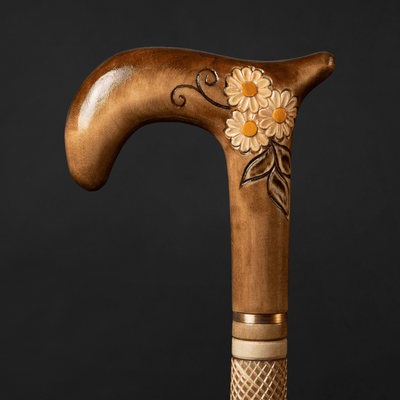You have no items in your shopping cart.
Recent Posts
-
How to Walk With a Cane Correctly to Avoid Back or Shoulder Strain?
-
5 Common Mistakes People Make When Buying a Walking Cane (and How to Avoid Them)
-
How to Choose a Walking Cane That Reflects Your Personality (Not Just Your Needs)?
-
Walking Canes That Match Formalwear for Weddings and Events
-
Why Walking Canes Are the New Fashion Statement?
-
How to Eliminate Hand Discomfort When Using a Walking Cane – The Simple Leather Grip Solution
MOST POPULAR NOW
10
Apr
Proper maintenance of a walking stick is essential to ensure it serves its purpose and lasts for a long time. Walking sticks, also known as canes, have been used for centuries for different purposes, including support, balance, and style. However, regardless of their intended use, all walking sticks require proper care and maintenance to ensure they remain in excellent condition. In this article, we will discuss the different types of walking sticks, why proper maintenance is essential, and how to choose the right walking stick for you.
How to properly care for your walking stick? Cleaning and maintenance tips
The different types of walking sticks
Walking sticks come in various types, each with its unique characteristics and design. The most common types include:
-
Wooden walking sticks - Wooden walking sticks are the most popular type and are made from different types of wood, including cherry, oak, and hickory. They are known for their strength, durability, and classic look. However, wooden walking sticks require regular maintenance to prevent cracking, splitting, and warping.
-
Folding walking sticks - Folding walking sticks are a practical option for people who need to carry their walking sticks with them wherever they go. They are lightweight, easy to store, and come in different designs and colors.
-
Hiking walking sticks - Hiking walking sticks are designed for outdoor activities and provide stability and support on uneven terrain. They are usually made from lightweight materials such as aluminum or carbon fiber, and some models come with shock absorbers to reduce impact on joints.
-
Fashion walking sticks - Fashion walking sticks are designed for style and often come with ornate handles and intricate designs. They are not designed for support and stability and are best used as accessories.

Choosing the right walking stick for you
Choosing the right walking stick depends on various factors, including your height, weight, and intended use. Here are some tips to help you select the right walking stick:
-
Height - Your walking stick should be the same height as your wrist when your arms are at your sides. If the stick is too long, it can cause strain on your shoulder and back, and if it's too short, it won't provide enough support.
-
Weight - Consider the weight of the walking stick, especially if you need to carry it for an extended period. Lightweight materials such as aluminum or carbon fiber are ideal for hiking or long walks.
-
Handle - The handle of your walking stick should be comfortable and provide a secure grip. Handles come in different shapes and materials, including wood, rubber, and foam.
-
Style - Choose a walking stick that reflects your personal style and complements your outfit. If you're using the walking stick for support and balance, functionality should come first, but style is also important.
Why proper maintenance of a walking stick is essential?
Proper maintenance of a walking stick is essential to ensure it lasts for a long time and performs its intended function. Here are some tips for maintaining your walking stick:
-
Clean your walking stick regularly to remove dirt and grime. Use a damp cloth to wipe down the stick and a soft brush to remove dirt from the crevices.
-
If you have a wooden walking stick, oil it regularly to prevent cracking and splitting. Apply a thin layer of linseed or walnut oil and wipe off any excess.
-
If your walking stick has rubber tips, replace them regularly to ensure a secure grip and prevent slipping.
-
Store your walking stick in a cool, dry place to prevent warping or bending. Avoid leaving it in direct sunlight or damp areas.
In conclusion, choosing the right walking stick and maintaining it properly is essential to ensure it lasts for a long time and performs its intended function.
Cleaning your walking stick
The different types of walking sticks
There are several types of walking sticks available on the market today, each designed for different purposes. Here are some of the most common types:
-
Hiking sticks: These are designed specifically for hiking and are typically made from lightweight materials like aluminum or carbon fiber. They often come with shock-absorbing mechanisms and ergonomic handles to reduce strain on the hands.
-
Trekking poles: Similar to hiking sticks, trekking poles are also designed for hiking but typically come in a set of two. They provide extra stability and support for those who need it.
-
Walking canes: These are typically used for stability and support, and are often designed with a curved handle to fit comfortably in the hand. They can be made from a variety of materials, including wood, aluminum, and carbon fiber.
-
Nordic walking poles: These are similar to trekking poles, but are designed specifically for Nordic walking - a type of walking that involves using poles to engage the upper body muscles.
-
Fashion canes: These are designed more for fashion than function, and often come in decorative styles and materials like silver or gold.
Choosing the right walking stick for you
When it comes to choosing the right walking stick for you, there are several factors to consider. The first thing to think about is the purpose of the stick. Will you be using it for hiking or walking on flat ground? Will you need it for stability or support? Different types of walking sticks are designed for different purposes.
Next, you'll want to consider the length of the stick. A walking stick that is too short or too long can be uncomfortable to use, so it's important to find one that is the right length for your height. As a general rule, a walking stick should be about the same height as your armpit.
The weight of the stick is also an important factor to consider. If you plan to use the walking stick for long periods of time, you'll want to choose one that is lightweight and easy to carry.
Finally, consider the materials used to make the walking stick. Wooden sticks can be stylish and traditional, but may not be as durable as those made from aluminum or carbon fiber.
In conclusion, a walking stick can be a valuable tool for anyone who enjoys walking or hiking. Proper maintenance and cleaning of your walking stick will ensure it lasts for years to come. By choosing the right type of walking stick for your needs and taking good care of it, you can enjoy the many benefits that come with using a walking stick.
Maintaining the handle
The handle of your walking stick is an important part of the overall structure and can greatly affect the comfort and usability of the stick. Proper care and maintenance of the handle will ensure that it lasts as long as the rest of the stick.
Materials used in walking stick handles
Walking stick handles can be made from a variety of materials, including wood, rubber, cork, and foam. Each material has its own unique characteristics and requires specific care and maintenance.
- Wooden handles are a popular choice for traditional walking sticks and can add a touch of elegance to your walking gear. However, wood can be sensitive to moisture and temperature changes, so it's important to keep it dry and avoid leaving it in direct sunlight or extreme heat.
- Rubber handles are a common choice for hiking sticks and can provide a comfortable grip, even in wet conditions. They are also durable and easy to clean, making them a practical choice for those who use their walking stick frequently.
- Cork handles are lightweight and provide a comfortable grip, but can be susceptible to damage if not properly cared for. They should be kept dry and cleaned with a damp cloth only.
- Foam handles are another lightweight option and can provide a soft, cushioned grip. They are easy to clean and maintain, but can wear out more quickly than other handle materials.
How to clean and care for different types of handles?
Cleaning and maintaining your walking stick handle will depend on the specific material it is made from. Here are some tips for cleaning and caring for different types of handles:
-
Wooden handles: To clean a wooden handle, use a damp cloth to wipe away any dirt or debris. Avoid using harsh chemicals or soaking the handle in water, as this can cause damage. If the handle becomes dry or cracked, apply a small amount of wood oil to restore its luster and protect it from further damage.
-
Rubber handles: Rubber handles can be cleaned with soap and water, or a mild cleaning solution. Avoid using harsh chemicals or abrasive materials that can damage the rubber. If the handle becomes sticky or slippery, apply a small amount of talcum powder to restore its grip.
-
Cork handles: Cork handles should be cleaned with a damp cloth only. Avoid using soap or harsh chemicals that can damage the cork. If the handle becomes dry or cracked, apply a small amount of cork sealant to protect it from further damage.
-
Foam handles: Foam handles can be cleaned with soap and water, or a mild cleaning solution. Avoid using harsh chemicals or abrasive materials that can damage the foam. If the handle becomes worn or damaged, it may need to be replaced.
Tips for protecting your handle
In addition to regular cleaning and maintenance, there are a few things you can do to protect your walking stick handle and extend its lifespan:
-
Use a wrist strap: A wrist strap can help prevent the handle from slipping out of your hand and protect it from damage if you accidentally drop the stick.
-
Store the stick properly: When not in use, store your walking stick in a cool, dry place away from direct sunlight or extreme heat.
-
Avoid extreme temperatures: Avoid exposing your walking stick handle to extreme temperatures, as this can cause damage or warping.
-
Use a protective cover: Consider using a protective cover to keep your walking stick handle clean and free from scratches and other damage.
By following these tips and properly caring for your walking stick handle, you can ensure that it lasts for years to come and continues to provide you with comfort and support on all of your walks and hikes.
Maintaining the shaft
Just like any other part of your walking stick, the shaft also requires proper maintenance. The shaft is the long, cylindrical part of the stick that connects the handle to the tip. Walking stick shafts can be made from a variety of materials such as wood, bamboo, metal, or even carbon fiber. In this section, we'll discuss the best practices for cleaning and caring for different types of shafts.
Materials used in walking stick shafts
Walking stick shafts can be made from various materials. Wooden shafts are the most common, and they can be made from different types of wood such as maple, hickory, or ash. Other common materials used for walking stick shafts include bamboo, metal, and carbon fiber. Each material requires specific cleaning and care to maintain its quality.
How to clean and care for different types of shafts?
- Wooden shafts: Wooden shafts require regular cleaning to maintain their quality. Use a damp cloth to wipe the shaft gently, and avoid using abrasive materials that can scratch the surface. You can also use a wood cleaner or polish to keep the wood looking shiny and new. However, make sure to choose a product that is safe for the type of wood used in your walking stick.
- Bamboo shafts: Bamboo shafts are lightweight, durable, and easy to clean. To clean a bamboo shaft, use a damp cloth to wipe the surface gently. You can also use a bamboo cleaner or polish to keep it looking new.
- Metal shafts: Metal shafts, such as those made from aluminum or titanium, are sturdy and resistant to wear and tear. However, they can become dirty over time. To clean a metal shaft, use a soft cloth to wipe the surface gently. You can also use a metal cleaner or polish to keep it looking shiny.
- Carbon fiber shafts: Carbon fiber shafts are lightweight, strong, and resistant to wear and tear. To clean a carbon fiber shaft, use a soft cloth to wipe the surface gently. You can also use a carbon fiber cleaner or polish to keep it looking new.
Tips for protecting your shaft
To protect your walking stick shaft, avoid leaving it in extreme temperatures or humidity. Exposure to direct sunlight or excessive moisture can damage the shaft, causing it to warp or crack. When storing your walking stick, keep it in a cool, dry place, and avoid placing it in a tight space where it can get bent or damaged. Additionally, avoid leaning on the shaft too heavily or using it to support your entire weight as this can cause it to break or bend.
By following these simple steps, you can keep your walking stick shaft in excellent condition, allowing you to enjoy it for years to come.
Maintaining the tip
The tip of your walking stick is the part that comes in contact with the ground, and as such, it is subject to wear and tear. Proper maintenance of the tip is crucial to ensure that your walking stick provides you with a safe and comfortable experience.
Materials used in walking stick tips
Walking stick tips are made from a variety of materials, including rubber, metal, and plastic. Each material has its unique properties, and proper maintenance will depend on the specific type of tip.
How to clean and care for different types of tips?
Rubber tips are a popular choice for walking sticks as they provide excellent grip on most surfaces. To clean a rubber tip, simply wipe it down with a damp cloth. If the tip is particularly dirty, you can use a mild soap solution to clean it. Be sure to dry the tip thoroughly after cleaning.
Metal tips are also common, especially for hiking and trekking poles. Metal tips can become dull over time and lose their grip on surfaces. To sharpen the tip, use a file or sandpaper to remove any nicks or burrs. If the tip is rusted, you can use a rust remover solution to clean it. Be sure to dry the tip thoroughly after cleaning.
Plastic tips are not as durable as rubber or metal tips but are still commonly used for walking sticks. To clean a plastic tip, simply wipe it down with a damp cloth. If the tip is cracked or damaged, it will need to be replaced.
Tips for protecting your tip
To prolong the life of your walking stick tip, you should avoid using it on abrasive surfaces such as concrete or asphalt. These surfaces can quickly wear down the tip and make it less effective. Instead, stick to softer surfaces such as grass or dirt.
It's also a good idea to replace your walking stick tip periodically, even if it doesn't appear to be worn. This will ensure that the tip is always in good condition and providing you with optimal grip and stability.
In conclusion, proper maintenance of your walking stick tip is essential to ensure a safe and comfortable walking experience. By following these tips, you can keep your walking stick tip in good condition for many years to come.
Storing your walking stick
The importance of proper storage
After cleaning and maintaining your walking stick, it is important to store it properly to keep it in good condition. Improper storage can damage your walking stick, making it unsafe to use and shortening its lifespan.
Tips for storing your walking stick
Here are some tips for storing your walking stick:
-
Keep it dry: Moisture can cause damage to your walking stick, so it is important to keep it dry. Avoid storing your walking stick in damp or humid areas, and wipe it dry before storing it.
-
Store it in a cool, dry place: It is best to store your walking stick in a cool, dry place, away from direct sunlight and extreme temperatures. Exposure to sunlight and heat can cause your walking stick to warp, crack or fade.
-
Use a wall-mounted holder: A wall-mounted holder is an excellent option for storing your walking stick. It keeps your walking stick off the ground and out of harm's way, while still keeping it easily accessible.
-
Use a walking stick bag: A walking stick bag is a great way to protect your walking stick from scratches, dust and other types of damage. It also makes it easier to transport your walking stick when you are on the go.
What to avoid when storing your walking stick?
Here are some things to avoid when storing your walking stick:
-
Leaning it against a wall: Leaning your walking stick against a wall can cause it to fall over, which can lead to damage or injury.
-
Leaving it on the ground: Leaving your walking stick on the ground can cause it to get stepped on, kicked, or otherwise damaged.
-
Storing it in a crowded area: Storing your walking stick in a crowded area can increase the risk of it getting knocked over, bumped into, or otherwise damaged.
Proper storage is an essential part of maintaining your walking stick. By following these tips, you can help ensure that your walking stick stays in good condition and lasts for years to come.
Troubleshooting common issues
Your walking stick is a valuable tool, but it may encounter some issues over time. In this section, we'll discuss some common issues that walkers may face and how to address them.
How to identify issues with your walking stick?
Regular maintenance and inspection of your walking stick can help you identify potential issues early on. Some common issues include loose handles, shafts, or tips, as well as cracks, splinters, or other signs of wear and tear.
Fixing loose handles, shafts, and tips
If you notice that your walking stick's handle, shaft, or tip is loose, it's important to address the issue before it gets worse. In many cases, you can simply tighten the screws or bolts that hold the components together using a screwdriver or wrench. If the components are held together with glue, you may need to reapply glue to ensure a tight fit.
If the handle, shaft, or tip is beyond repair, you may need to replace it. Check with the manufacturer or a local walking stick supplier to see if replacement parts are available.
What to do If your walking stick breaks?
If your walking stick breaks, don't panic. Depending on the severity of the break, you may be able to fix it yourself or take it to a professional for repair.
If the break is minor, such as a crack or splinter, you can often fix it using wood glue or epoxy. Apply the glue or epoxy to the affected area, clamp the pieces together, and allow the glue to dry completely before using your walking stick again.
If the break is more severe, such as a clean break or split, you may need to take your walking stick to a professional for repair or replacement.
In some cases, you may be able to salvage the remaining parts of your broken walking stick and turn them into a new walking stick. With a little creativity and the right tools, you can transform a broken walking stick into a unique work of art.
Proper maintenance of your walking stick is essential to ensure its longevity and functionality. By regularly cleaning and caring for your walking stick, you can prevent issues from arising and ensure that your walking stick is always ready when you need it.
Remember to always store your walking stick in a cool, dry place, and to inspect it regularly for signs of wear and tear. If you do encounter an issue with your walking stick, don't hesitate to address it promptly to prevent further damage.
By following the tips outlined in this guide, you can keep your walking stick in top condition for years to come.
Conclusion
In conclusion, proper maintenance is crucial in ensuring that your walking stick remains in great condition and serves you for a long time. It is essential to clean your walking stick regularly, maintain the handle, shaft, and tip, store it properly, and troubleshoot any issues that arise. By following the guidelines provided in this article, you can ensure that your walking stick remains in top shape for your next adventure.
Recap of the importance of proper maintenance
Regular cleaning of your walking stick is essential in preventing the accumulation of dirt and grime, which can lead to the deterioration of the walking stick's surface. Additionally, maintaining the handle, shaft, and tip of your walking stick ensures that they remain in good condition and function correctly. Proper storage of your walking stick is also necessary to prevent damage that can occur due to exposure to harsh weather conditions, humidity, or direct sunlight.
Final tips for keeping your walking stick in great condition
- Regularly clean your walking stick with a soft cloth or brush and mild soap.
- Use appropriate cleaning materials that are safe for the specific material of your walking stick.
- Avoid storing your walking stick in damp, humid areas, or direct sunlight.
- Periodically check the handle, shaft, and tip for any signs of wear or damage, and repair or replace them as necessary.
- Always use your walking stick as intended and avoid excessive force or weight.
By following these tips, you can ensure that your walking stick remains in excellent condition and serves you for many years to come.
Also Purchased
-
Beige Walking Cane for Ladies Chamomile Flower, Wooden Walking Stick
Introducing our beautiful Beige Walking Cane for Ladies with Chamomile Flower, a Wooden Walking Stick that is hand carved and handmade, making it both pretty and unique. This walking cane...$79.50 -
Exotic Burl Wood Walking Cane – Fashionable Artisan Stick
A sculptural statement in deep, oceanic blue — this walking cane is more than a support accessory, it's wearable art. Meticulously hand-shaped from stabilized burl wood, the handle evokes the...$425.00 -
ArtWalkingSticks™ MAGIC Red Walking Cane - Unisex, Handmade
This piece of art is created for those who value details. We make one of a kind, handcrafted wood and resin canes. Our Wooden Canes are completely unmatched in creativity....$425.00 -
Fashionable Lion Shoehorn Long Handle, Pearly Brown Shaft, Handmade
Introducing our Fashionable Lion Shoehorn, a handcrafted, long-handled shoe horn with a pearly brown shaft that's both stylish and practical. The intricate Lion design adds a touch of elegance to...$240.00 -
Carved Lion Head Comfortable Walking Cane, Unusual Crazy Walking Stick
Want to add a touch of royalty to your style? Look no further than our carved lion walking cane. People have used decorative lions in décor since ancient times, and...$182.00 -
Stylish Walking Cane For Man and Women, Natural Wood Canes, Designer
In order to make this stylish walking cane we used world color tendencies. This piece of art is created for those who value details. We make one of a kind, handcrafted...$430.00
































